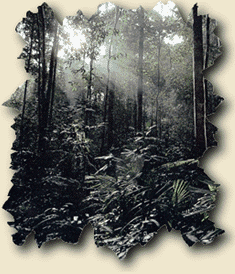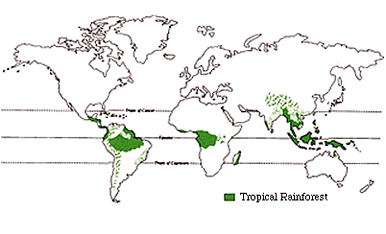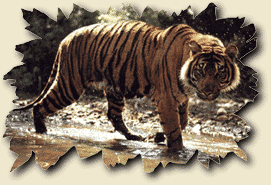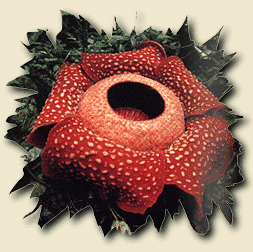
The soil is poor in nutrients, and the topsoil is only an inch or two deep, because the rain keeps washing it away.



MOTIVATION:
1. Brainstorm on a KWL chart what the students
Know
about rain forests.
2. Ask students what they Want to learn
about rain forests (leave L blank for now).
3. Show students pictures of the rain forest.
What do you see there? Have children describe the rain forest in
various ways- physical, animal life, plant life, etc.
PROCEDURE:
1. After looking at the pictures, have children
describe the rain forest. Hand them a data sheet that they will fill-in
using the information they will gather from the website:
http://mbgnet.mobot.org/sets/rforest/index.htm.
(All images in the table below were taken from this site)
|
|
|
|
| CLIMATE and SOIL |
 |
The rain forest averages between 80 and 400 inches of rain a year.
The average temperature does not change more than 15 degrees a year- from
between 75 and 90 degrees. The average humidity is 77- to 88 percent.
The soil is poor in nutrients, and the topsoil is only an inch or two deep, because the rain keeps washing it away. |
| LOCATIONS |  |
Most rain forests are clustered around the equator- between the Tropics of Cancer and Capricorn. There are rain forest in Central America, South America, Africa, Asia, and Australia. |
| ANIMAL LIFE |
 |
This tiger is one of the inhabitants of the Indonesian rain forest. It is endangered. The rain forests of the world are home to more animals than any other biome on earth. Over 10,000 kinds of ants can be found there. |
| PLANT LIFE |
 |
The rain forest is home to more varieties of plants than any other
biome on earth. This is a rafflesia flower. It is the largest
and smelliest flower in the world. It's smell attracts the insects,
which then fall inside and can't get out!
|
| soil | |
| flora | |
| fauna | |
| average yearly temperature | |
| average yearly rainfall | |
| tropics | |
| humidity | |
| nutrients |
ACTIVITIES:
1. Make a rainforest terrarium. Use
an old aquarium (or a 2-liter soda bottle), small pebbles or rocks, bits
of charcoal (from a pet store for aquariums), soil, plants, rocks, pieces
of wood. Layer the bottom with small pebbles, then charcoal, and
twice as much soil. Sprinkle with just enough water to make moist.
Place several plants like mosses, ferns, lichens, and small seedlings.
Put in several large rocks and decaying wood. You can even put in
small land animals like snails, earthworms, turtles, frogs or salamanders.
Put a loose fitting sheet of glass over the top of the terrarium (to permit
humidity level to build up). Make sure that some air can enter and
that is kept out of direct sunlight. The children will be able to
observe that the terrarium becomes a self-sufficient environment, with
the plants providing some nourishment for the animals and vice versa.
Have them compare the similarities to the rain forest!
2. Make a chart comparing the amount of rainfall
that the rain forest receives to what our area receives yearly.
FOLLOW-UP: This lesson will lead into the next lesson- "What are the Layers of the Rain Forest?